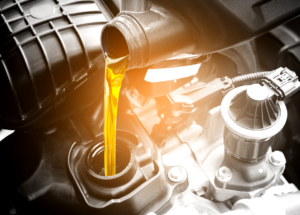What Happens if You Use Too Much Oil in Your Car?
Other than filling your petrol/diesel tank, the most common task required for your car is an oil change to ensure that it runs efficiently. This is extremely important as engines need to be well-lubricated, keeping them safe from damage, wear, and corrosion. Car owners and mechanics would be aware that low levels of oil can have catastrophic effects on your car, but another question that needs to be asked is what happens if you put too much oil in your car during a lubricant top-up or change? In this article, we will detail the most common symptoms of using too much oil, what you should do if you use too much and where you can find out how much oil your car takes.
How does your Car Take Oil?
Engines are made up of a huge number of precision-crafted parts working together at extremely high speeds and temperatures, requiring oil for proper lubrication and smooth movement. Oil is added to the crankcase in the engine via the cap to “Oil” underneath the bonnet. The oil then settles in the oil pan when the engine is not running. Once the engine starts, oil begins to circulate throughout the engine, passing through an oil filter that removes contaminants that could damage the engine.

What are the Symptoms of Using too Much Engine Oil?
A cars oil pan has been specifically designed to hold a precise volume of liquid that takes into account other variables such as fluid heat expansion and the pressure of the oil on components. If the pan is overfilled, the following symptoms may arise:
- Thick white smoke – If you drive your car and see large amounts of thick, white exhaust smoke, the main culprit would be the surplus oil burning within the engine block. This would need to be thoroughly investigated as it could potentially be other fluids such as antifreeze which would have a massive impact on your engine.
- Oil Leakage – If there are large quantities of oil pooling beneath your car, this could be a result of overfilling. If this occurs it is crucial to check if the oil plug underneath the car is loose as that could potentially be the source of the leak.
The Effects of Using Too Much Oil
We have now identified the symptoms of too much oil and ruled out all other potential issues. Before a plan of action is put into place it is very important to identify the potential damage this could cause and how you can reduce the impact.
- Pressure on crankshaft heads and tails – The head and tail couplers and ends on crankshafts are extremely important components as they stop the oil leaking. If there is too much oil in the engine, it puts extra pressure on these components, which can lead to leaks. Additionally, if this occurs on the flywheel end of the shaft, oil can potentially contaminate and damage the clutch.
- Friction on the crankshaft – When covered in too much oil, the crankshaft and crane can actually start to experience the opposite of what the oil is required to do, damaging them by causing greater resistance and friction.
- Engine wear – If oil is at an incorrect pressure, engine parts will not be lubricated properly increasing the amount of wear on these parts.
- Engine damage – Too much lubricant in the system causes pressure on the crankshaft to increase. This can result in oil entering the crankshaft exhaust pipe, entering the combustion chamber, blocking the suction hose with oil soot. If this happens, it can lead to engine overload. Overflowing engine oil can also lead to bent engine rods and can also collapse the valve pipes.
- Spark plug fouling – Excess oil can also get into the spark plugs. If this happens, they will need to be replaced as it can cause misfires or even a catastrophic effect.
If any of these events occur, firstly you will need to check your oil level with the dipstick. To do this, warm the engine, ensure you are parked on a flat surface, turn off the car, then using a dipstick, read the oil level. This should be between the “min” and “max” markers on the stick.
What Can You Do?
If you have put too much oil in your car, the main task required is to drain the excess oil. This can be done by:
- After the excess oil has drained from the engine, re-screw the oil cap, using a wrench if necessary.
- Check the oil level using the dipstick. If there is still too much, keep draining until an optimal level is reached.
- Refill your oil reservoir to below the maximum level if you have over drained.
How Much Oil Should My Car Take?
On average, the amount of oil car engines require is roughly between 4 and 8 litres. Although this differs greatly between make and model, the general rule of thumb is:
- Four-cylinder engines – approximately 4.5 litres of oil.
- Six-cylinder engines – approximately 5.5 litres of oil.
- Eight-cylinder engines – approximately 4.5 to 7.5 litres.
It is vital to the health of your car engine that you can tell the exact volume of oil it needs before it’s topped up or changed. To find out how much engine oil that your car needs, always check the lubrication section in your car’s owner’s manual. The amount of oil required will be listed with the specific type of oil that your vehicle requires.
Which Oil from Finol Oils
Correct lubrication is crucial in ensuring that your car operates at the highest level. That’s why Finol always recommends using the Which Oil lubricant advisor to ensure you use the correct engine oil every time. Which Oil will not only give you accurate and reliable recommendations, it will even highlight engine capacity and filter volumes to ensure every aspect of your oil change is efficient. The lubricant advisor, available for use at www.whichoil.ie offers many features to give you a fast and reliable recommendation.



